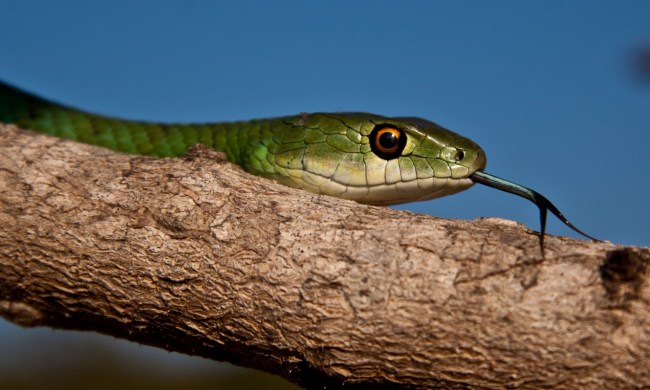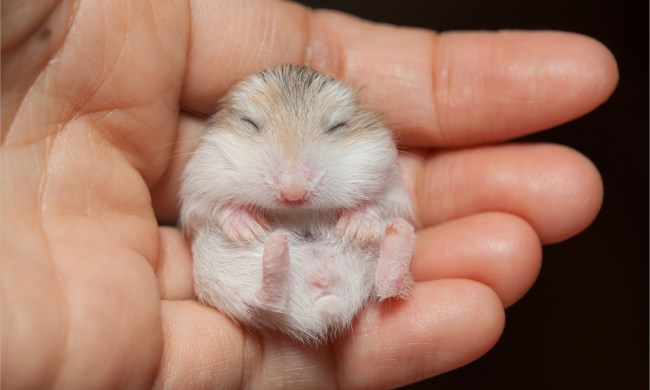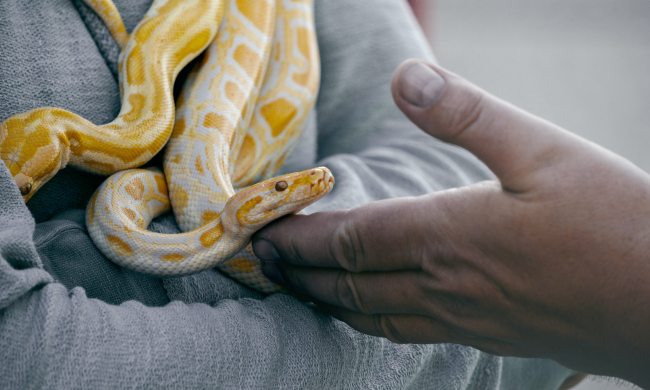Snake pets have become hugely popular — it seems like everyone has one. And they really do make great companions when you’re properly prepared and care for them well. If you want to get in on this, you’ll need a few things before she makes her big entrance. For starters, don’t bring home a boa or python right out of the gate. If you’re new to the herpetoculture game, the beautiful and friendly corn snake may be the right pet for you. Choosing a species is just the beginning, though. You need to figure out how to look after a corn snake, too.
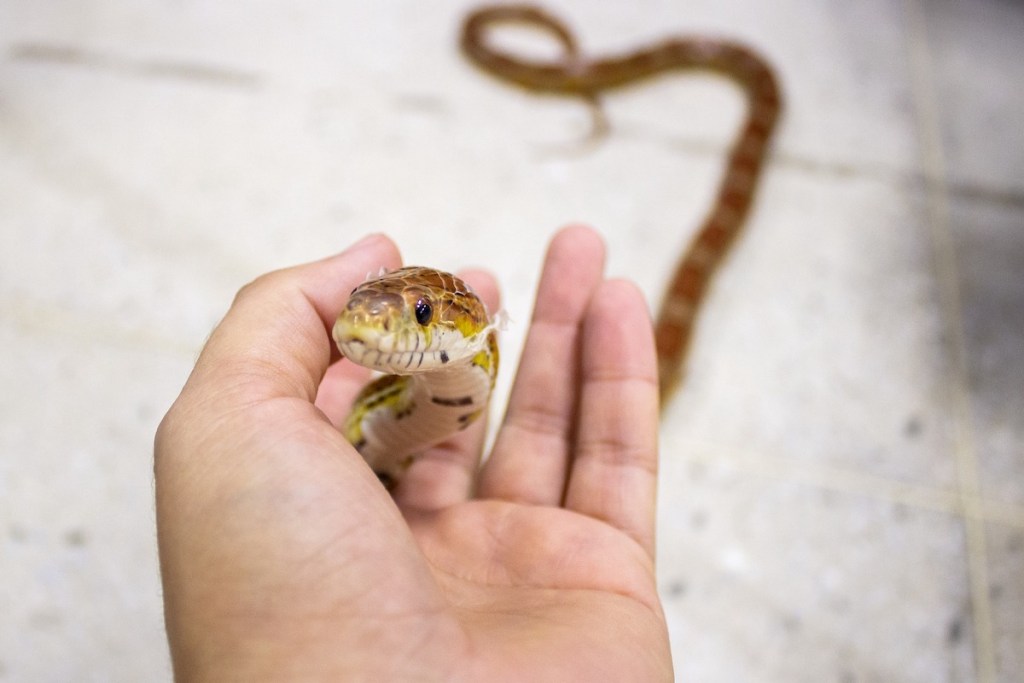
Habitat
It’s first on the list because you’ll set this up long before you find your new friend. Your corn snake pet wants to live alone but still needs a pretty big housing. Assuming you get her as a baby, you should prepare for her to grow a lot, and you’ll want to upgrade her tank as necessary.
An adult corn snake spans about 5 feet and needs a 40-gallon terrarium with substrate on the bottom. You can certainly make your own using ripped-up paper (no ink, though) or purchase everything from a pet store.
Keep one side of the tank warmer (at about 85 degrees) with a heating pad and leave the other end for the cool zone — room temperature is fine.
Behavior
Even if you think they look perfect, don’t adopt a corn snake without understanding their personalities. The good news is, this species is actually quite tame (for a snake) and can adjust extremely well both to your home life and to you. Two things to watch out for: These guys wave their tails when threatened — like a rattlesnake — and they don’t want to be touched when they are shedding. Avoid her completely if you see any threatening behavior, but remember, she’s more scared of you than you are of her.
Health
These beauties can live up to 20 years if you take excellent care of her and address any health conditions. You should recognize the signs of a sick snake, like too much shedding, no interest in food, cloudy eyes, or vomiting. Mouth rot can be of particular concern and can lead to more serious problems. Also, snakes are escape artists. Forgetting to replace the lid may be deadly to your sweet girl.
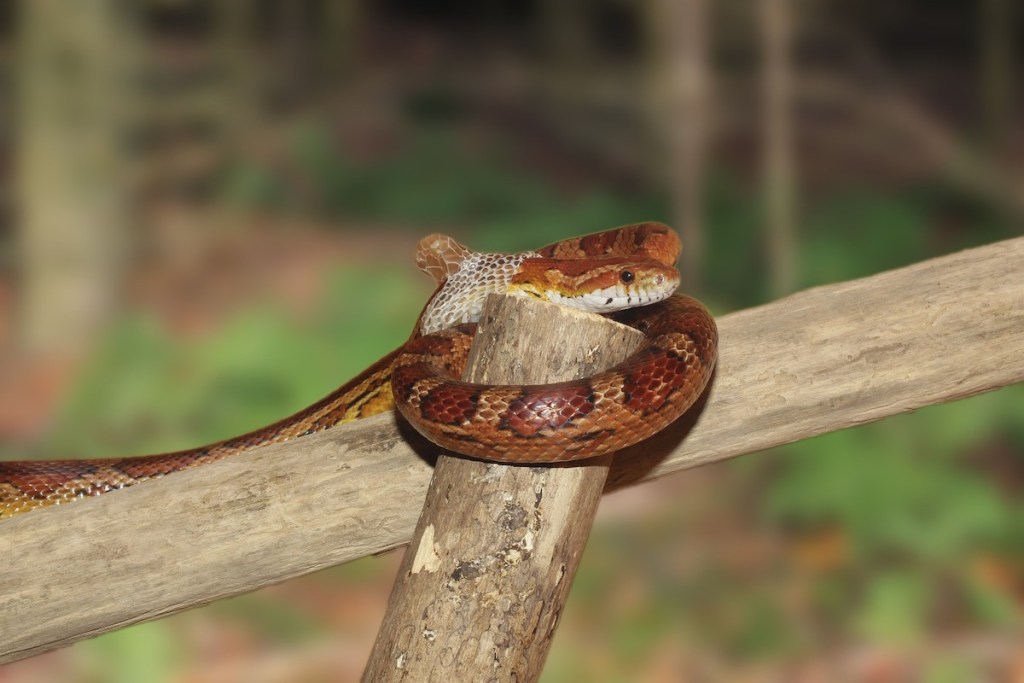
Feeding
Unlike some other species, corn snakes will take frozen rodents just fine, which can help ease the process and your queasy stomach. Also, if you do use live rodents, you should mind her while she eats since an angry mouse can attack your hisser.
Always remove her from the tank and use a separate feeding house as it might get messy. Adults eat every one to two weeks, and younger animals eat once to twice per week, depending on size, age, and appetite.
Handling
When you first meet your new pet, you should take a bit of time to get used to each other. Begin by touching her only when you remove her from the cage during feedings. It’s great if she associates you with yummy food. Corn snakes love to test things out and will climb all over you, the furniture, and the room. If you feel nervous at first, feel free to use gloves, but you don’t want to do this forever — snakes work heavily on smell because they have bad eyesight.
Entertainment
When you don’t have her out to play with, she’ll need branches, bark, and stones in her habitat to lie on and sun. Give her somewhere to hide and places to rest on both ends of the tank. Snakes like to curl around, slither through, and hide under things, so you can help facilitate that when you are with her and in her home.
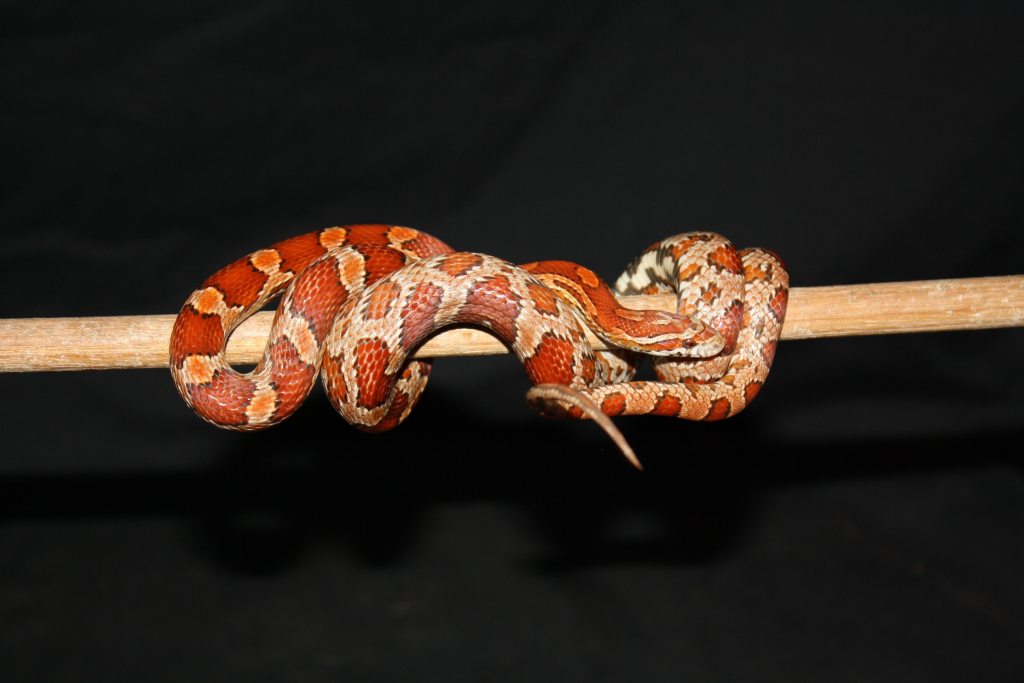
Maintenance
Yup, you need to clean out your snake enclosure, and there may be animal guts if they regurgitate some food (we hate to be the ones to tell you).
- If you have a layer of wood chips on the ground, you can remove these as needed, but you should also clean up weekly.
- Put her in the feeder tank while you do so (better yet, combine this with mealtime) and scrub the walls and her accessories.
- Use only pet-friendly cleansers and make sure there’s no smell left before reinstalling her.
Grooming
Snakes basically groom themselves because they shed their skins. Baby snakes shed a lot, but an adult might go through the process only twice per year. The most important thing for you to do here is leave her alone. Ensure that it’s humid enough for a smooth undressing, and then leave her to make it happen. If you spot any issues like retained eye caps, take her to the vet. Never try to treat this (or any other condition) yourself.
To meet the perfect snake, find a reputable breeder and always choose a captive-bred animal. Look for clear eyes, nice skin, and no evidence of parasites, as these will all lead to greater health concerns down the line. Get her checked out right away and keep visiting the vet every year or so to maintain excellent health. Remember, you have a 20-year friendship in store, so make sure you are into the commitment.

